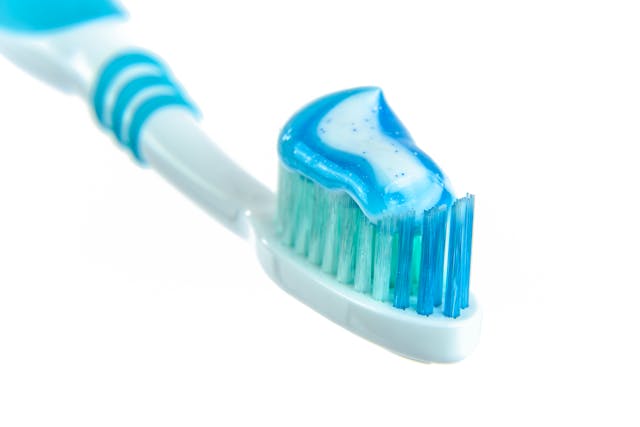
Gum disease, also known as periodontal disease, is a common dental issue that requires diligent care both at home and in the dental office. Proper management of gum disease involves more than just routine visits to the dentist Soho; it includes adopting effective home care practices. This article will outline key strategies for maintaining gum health, ensuring that your at-home efforts complement professional treatments.
Use an Electric Toothbrush
An electric toothbrush is a valuable tool for those managing gum disease. Unlike manual toothbrushes, electric models can deliver thousands of brush strokes per minute, providing superior plaque removal and gum stimulation. They are especially beneficial for individuals with gum issues due to their effectiveness in cleaning and ease of use.
- Choose an Electric Toothbrush with a Pressure Sensor: Many electric toothbrushes come with built-in pressure sensors that alert you when you’re brushing too hard. This feature helps prevent gum damage, which is crucial for individuals with gum disease.
- Ensure Proper Technique: Angle the toothbrush toward your gums and guide it gently along each tooth. This method maximizes the toothbrush’s effectiveness in cleaning and stimulating your gums.
- Opt for a High-Quality Brush: Select an electric toothbrush with soft bristles to avoid irritating your gums. Hard bristles can exacerbate gum issues and lead to further damage.
- Regular Replacement: Change the brush head every three to four months, or sooner if the bristles become frayed.
Incorporate a Water Flosser
A water flosser, or oral irrigator, is an excellent addition to your oral care routine, especially if you have gum disease. It uses a pulsating stream of water to remove food particles and plaque from between teeth and below the gumline, areas that traditional floss may miss. This can be particularly beneficial for those with deep gum pockets.
- Adjust the Pressure Setting: Opt for a water flosser with adjustable pressure settings. Start with a lower setting and gradually increase it to a comfortable level. This flexibility allows you to find the most effective pressure for your oral health needs.
- Use it Regularly: Incorporate the water flosser into your daily routine. Consistent use helps maintain gum health and prevents plaque buildup.
- Combine with Traditional Flossing: While a water flosser is effective, it should complement, not replace, traditional flossing. Using both methods provides a more comprehensive clean.
- Choose the Right Model: Look for a water flosser with multiple tips to target different areas of your mouth. Some models also come with specialized tips for gum health and plaque removal.
Floss Daily
Daily flossing is a cornerstone of effective gum disease management. While water flossers are useful, traditional flossing remains essential for cleaning the tight spaces between teeth and along the gumline. Proper flossing helps remove plaque that can contribute to gum disease and tooth decay.
- Use Proper Technique: When flossing, gently slide the floss between your teeth and curve it around each tooth in a C-shape. This technique helps clean the sides of your teeth and under the gumline.
- Consider Floss Picks: If traditional floss is challenging to use, floss picks can be a convenient alternative. They allow for quick and effective flossing without the need for complex techniques.
- Floss Before Brushing: Flossing before brushing allows fluoride from toothpaste to reach areas between your teeth, enhancing overall dental health.
- Choose the Right Type of Floss: For sensitive gums or tight spaces, use waxed floss or dental tape. These types are gentler and less likely to shred or cause irritation.
Utilize Interproximal Brushes
Interproximal brushes, or proxy brushes, are small, bristle-covered tools designed to clean between teeth. They are particularly useful for people with larger gaps between their teeth or for those who have difficulty using traditional floss. These brushes can be an effective alternative or supplement to flossing.
- Select the Correct Size: Interproximal brushes come in various sizes. It’s essential to choose the right size for your gaps to ensure effective cleaning without damaging your gums.
- Use Proper Technique: Insert the brush gently between your teeth, moving it back and forth to remove plaque and debris. Avoid forcing the brush into tight spaces.
- Combine with Other Tools: Use interproximal brushes in conjunction with an electric toothbrush and water flosser for a comprehensive oral care routine.
- Regular Cleaning: Rinse the brush thoroughly after each use and replace it regularly to maintain its effectiveness.
Visit Your Dentist Regularly
Even with a diligent home care routine, regular visits to your dentist are crucial for managing gum disease. Professional cleanings and checkups ensure that any tartar buildup below the gumline is addressed and that your oral health is on track.
- Schedule Routine Checkups: Visit your dentist at least every six months or as recommended by your dental professional. If you have gum disease, your dentist may suggest more frequent visits.
- Discuss Your Home Care Routine: Share your at-home care practices with your dentist. They can provide personalized advice and adjust your treatment plan as needed.
- Professional Cleanings: Regular cleanings are essential for removing tartar that cannot be eliminated with home care alone. This helps prevent further gum damage and disease progression.
- Consult a Specialist: If your gum disease is severe, consider consulting a specialist such as a periodontist. A dentist in Soho or your local area can refer you to a specialist for advanced treatment options.
Maintaining optimal gum health requires a combination of effective home care practices and regular professional dental visits. By integrating these strategies into your routine, you can manage gum disease and promote a healthier smile.

